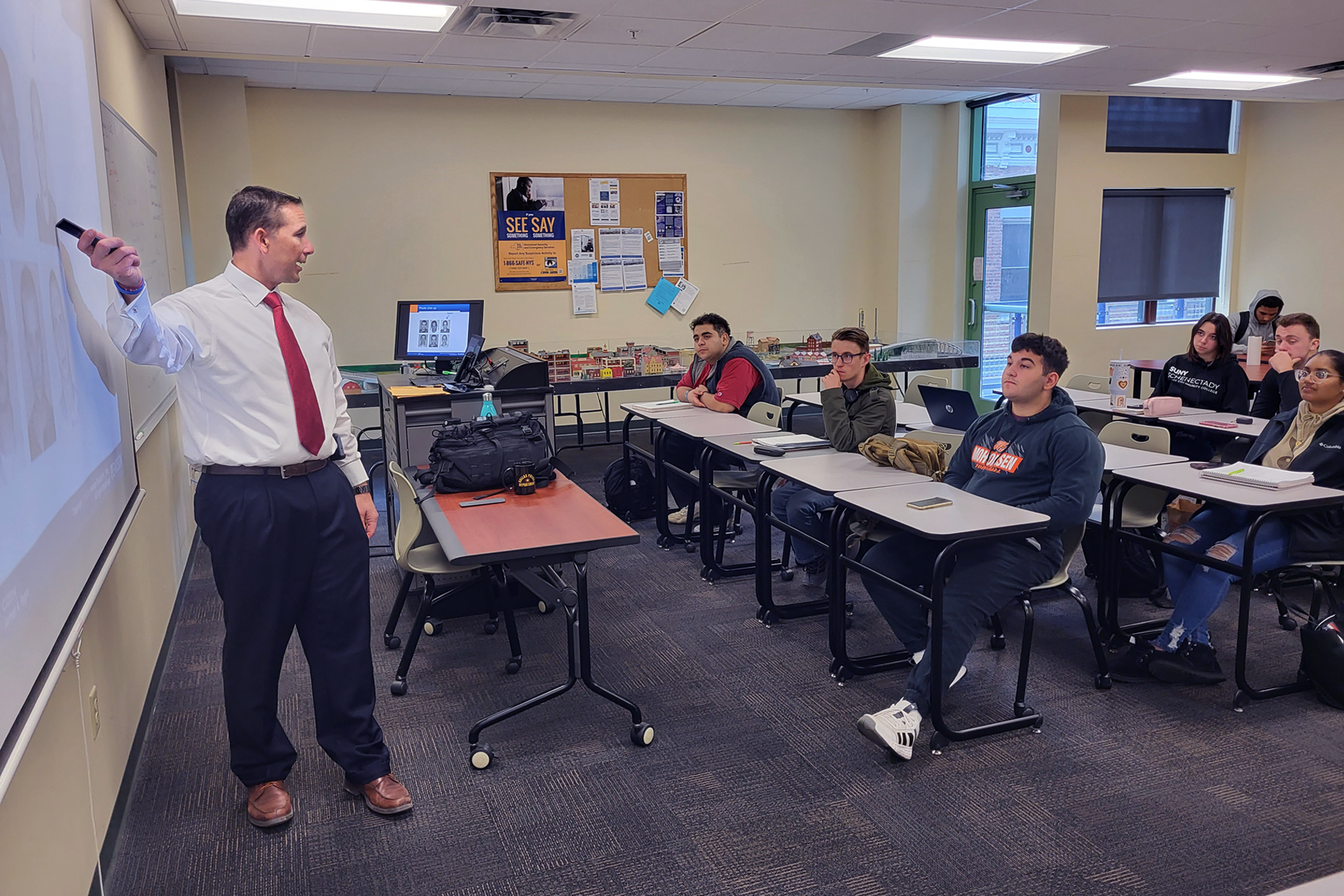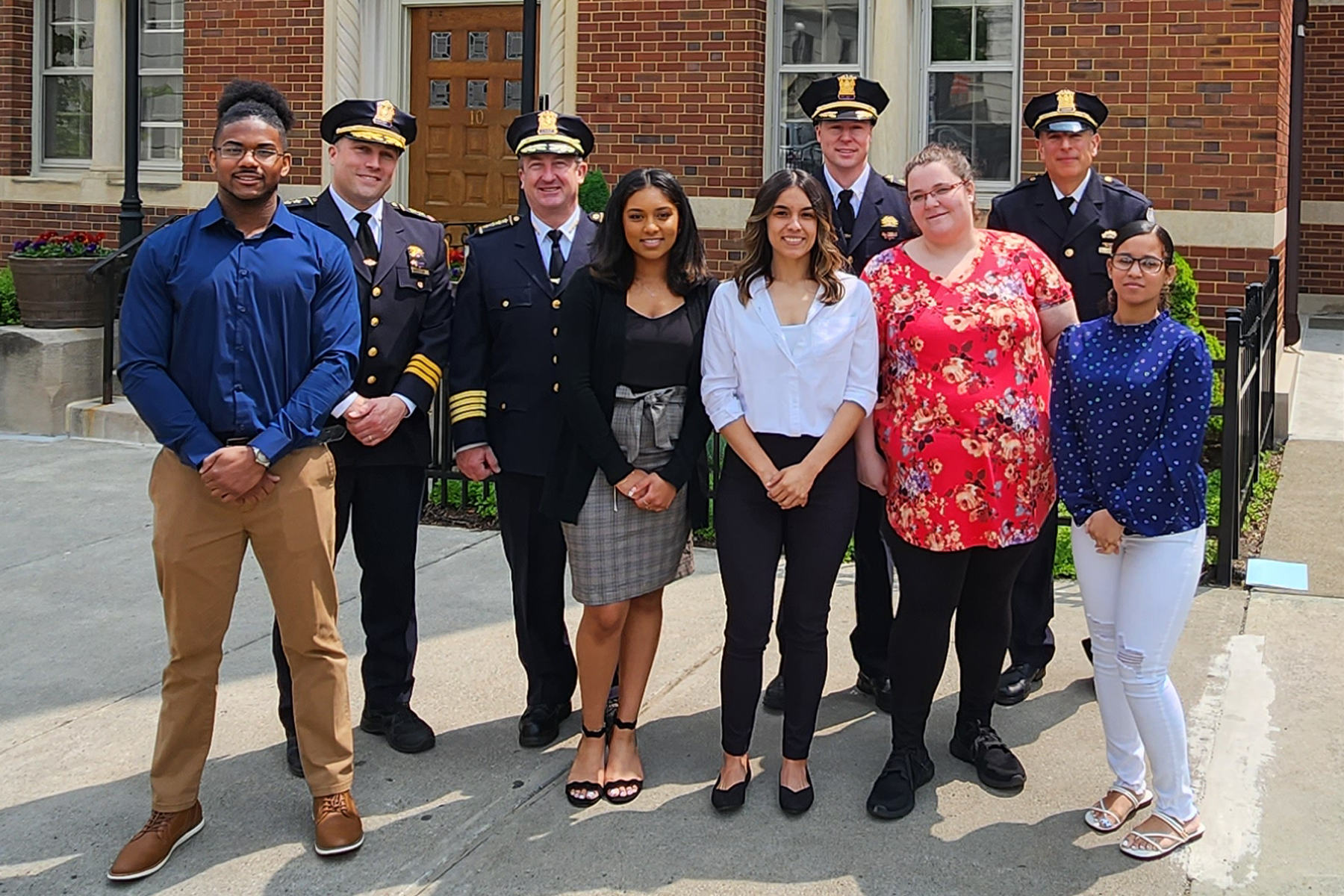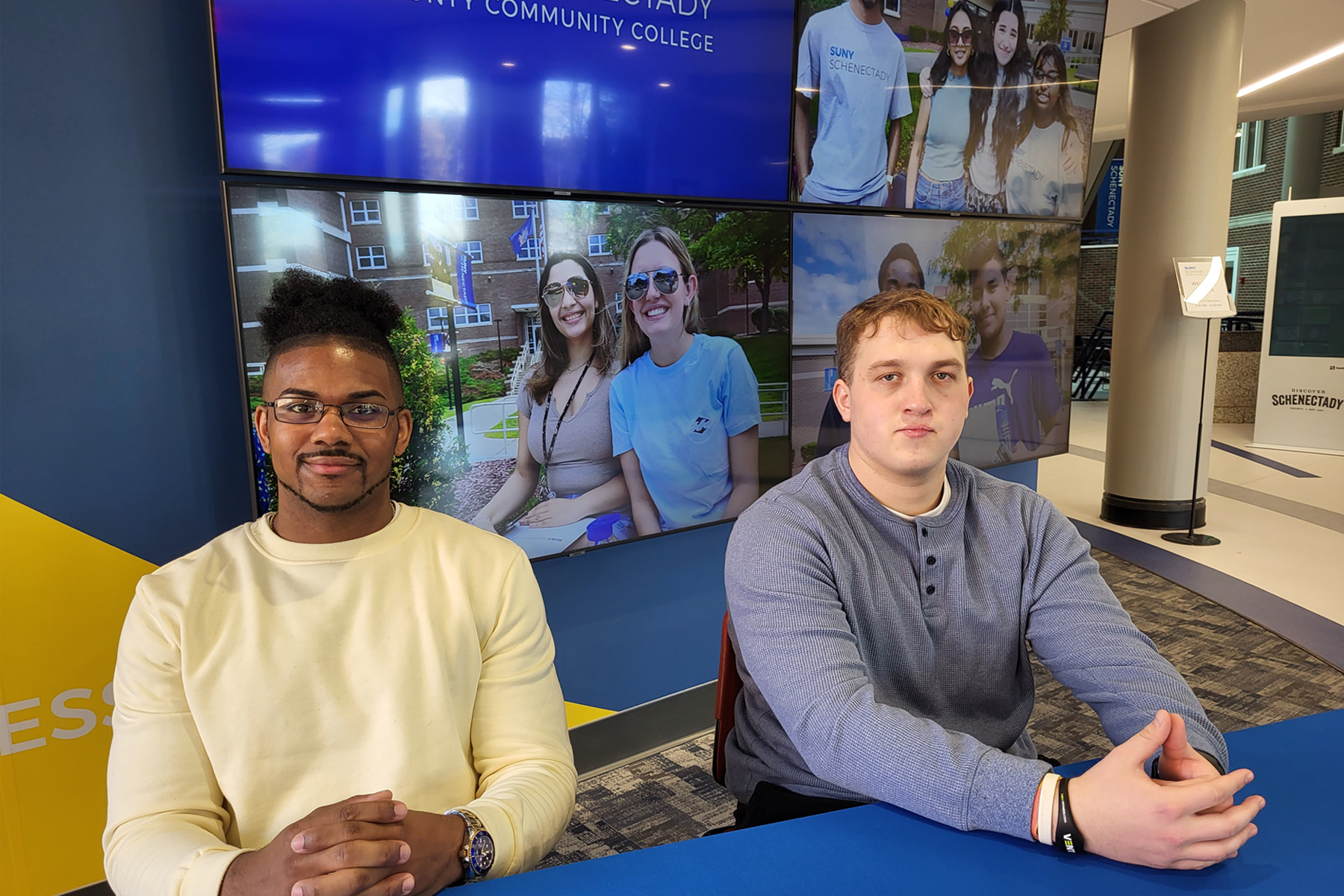Criminal Justice Classes and Club Provide Students With Real-World Knowledge from Law Enforcement Professionals

When students sit down or log on for their Criminal Justice courses, they might not realize at first that they have a Police Officer who has also served in special operations as a Hostage Negotiator, Technical Accident Investigator, SWAT Team Member, Multidisciplinary Police Instructor, Master Police Instructor, Detective, and in leadership roles as a Sergeant, Detective Sergeant, Commanding Officer of the Honor Guard, and SWAT Team Leader at the head of the classroom. But they soon discover that Assistant Professor Louis Aiossa, of the Division of Business, Criminal Justice, and Law, filled all those roles during his 23-years in law enforcement primarily with the Albany Police Department. Every day he shares examples of investigations he conducted and cases he worked on, demonstrating how what students are learning in class applies directly to the field.
“Because of my experience in law enforcement, I’m able to help illustrate principles in criminal justice or principles of criminal investigations,” he said. During a recent Introduction to Criminal Justice class, for example, Aiossa was covering search and seizure, and discussed investigations he conducted and protocols that were followed. Aiossa has also taught extensively at the Zone 5 Regional Law Enforcement Academy and the Albany Police Academy which trains new and veteran officers with agencies and organizations from throughout the Capital Region.
Criminal Justice major Michael Norwood said that listening to Aiossa describe examples of his work in the field has been invaluable. “He lets us know what he was thinking when he was in certain situations and what he did well and what he might have done differently,” he said. Norwood, who is President of the Criminal Justice Club, plans to graduate in May 2024. His goal is to become a New York State Trooper. “Ever since I was a little kid growing up, I always wanted to be a Police Officer,” he explained. “I like helping others and I think I’m good at communicating and can help deescalate situations.”

Aiossa also brings guest speakers into his classes, including local Police Officers, Detectives, and Federal Agents. This spring, he will lead students once again in a service learning project partnering with the New York State Division of Criminal Justice Services, Empire State Law Enforcement Memorial Fund, Inc., and the Albany Police Department in the planning and delivery of the New York State Police Officers Memorial mass and ceremonies in Albany. The memorial, the annual mass, and the Remembrance Ceremony honor the memory and sacrifice of police officers from around New York State who have been slain in the line of duty.

For Norwood (left) and Ryan Montee (right), also a Criminal Justice major, the Criminal Justice Club has been another way to connect with law enforcement professionals. This semester, the club has invited members of the New York State Police and the Albany Police Emergency Services Team (SWAT) to speak to students.
“Through the club, we want to help those students who want to get into law enforcement, police departments, victims services, and the courts to meet professionals in those areas,” said Montee, who is Treasurer of the club. He plans to graduate in December and, like Norwood, his goal is to become a New York State Trooper.
SUNY Schenectady offers a Criminal Justice A.S. degree that prepares students for transfer into related programs at a four-year college or university and a Criminal Justice A.A.S. degree that provides graduates with the academic, ethical, and legal foundation for careers in Criminal Justice to include law enforcement, private security, crime analysis, victim service, corrections, and the juvenile justice system.